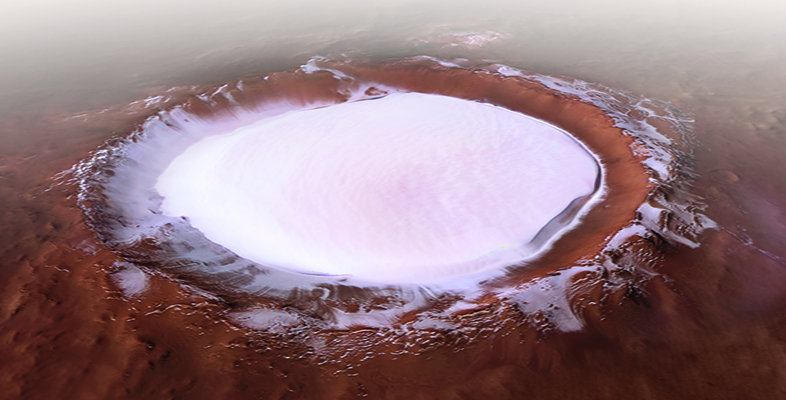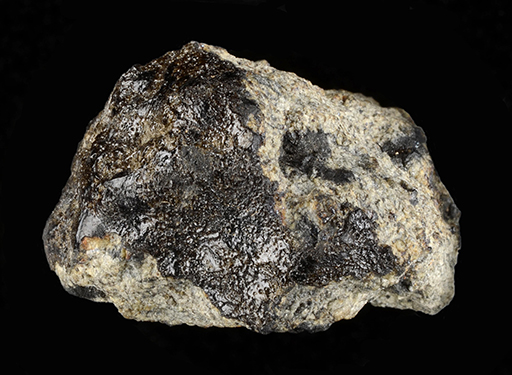4.3 Meteorites – rock samples from Mars!
In 1983, data from the Viking missions was compared with that obtained from the analysis of a group of meteorites (known as SNCs - shergottites, nakhlites, and chassignites named after Shergotty, Nakhla, and Chassigny). These meteorites (such as Figure 18) differed from most other meteorite types known, and their minerals, and chemical composition, suggested they formed from the crystallisation of molten rock, i.e., they are igneous rocks. Therefore, it was assumed they must have originated from a planetary body in the Solar System that was similar to Earth and large enough for volcanic activity to occur.
Gases were found to be trapped within glass produced when the meteorites were ejected from Mars. When this gas was compared with the modern martian atmosphere, as measured by the Viking landers, there was a match – the SNC meteorites were from Mars. To date, martian meteorites remain the only samples of Mars available for study on Earth, until planned sample return missions are launched.

